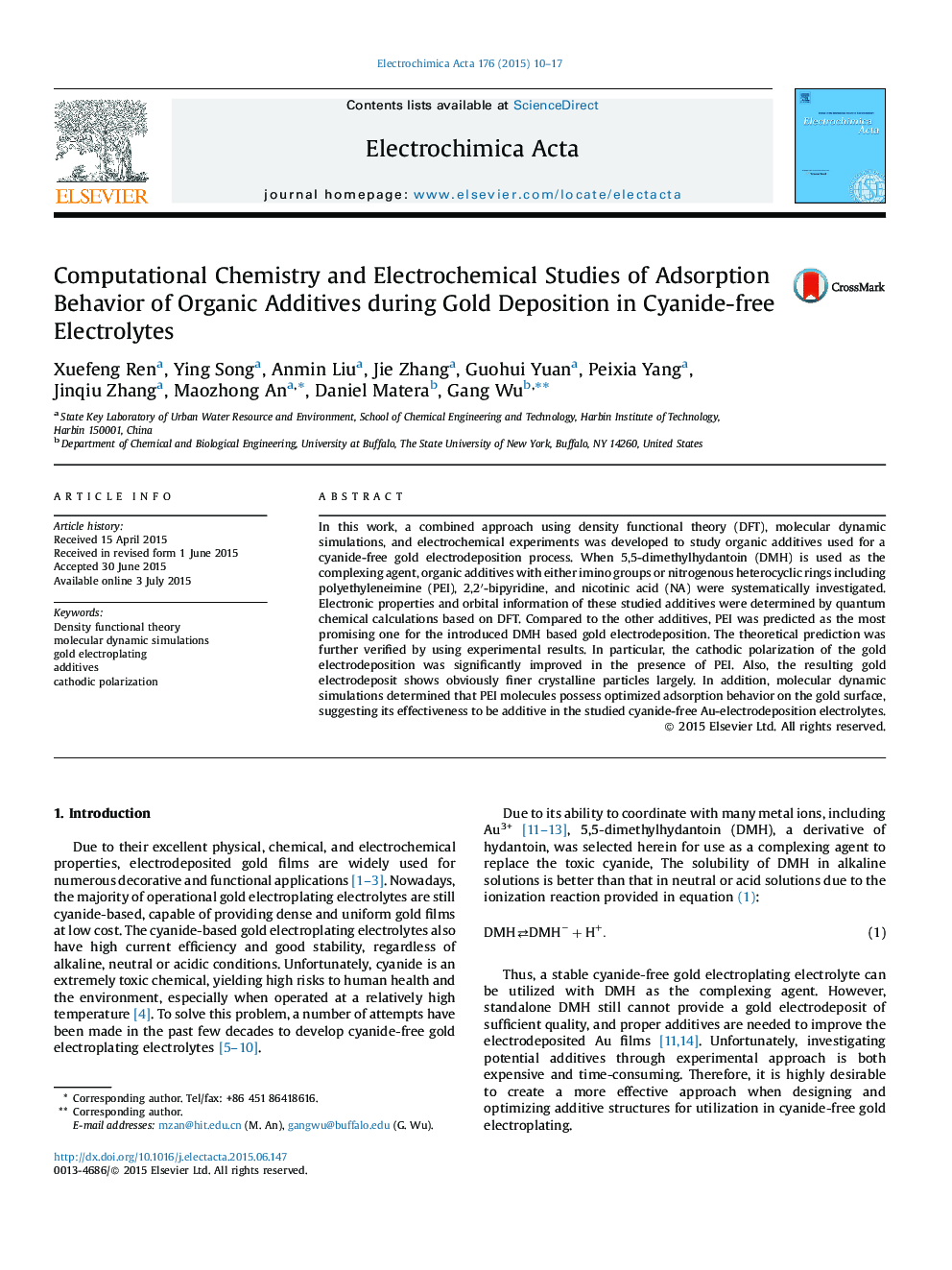| Article ID | Journal | Published Year | Pages | File Type |
|---|---|---|---|---|
| 6610789 | Electrochimica Acta | 2015 | 8 Pages |
Abstract
In this work, a combined approach using density functional theory (DFT), molecular dynamic simulations, and electrochemical experiments was developed to study organic additives used for a cyanide-free gold electrodeposition process. When 5,5-dimethylhydantoin (DMH) is used as the complexing agent, organic additives with either imino groups or nitrogenous heterocyclic rings including polyethyleneimine (PEI), 2,2â²-bipyridine, and nicotinic acid (NA) were systematically investigated. Electronic properties and orbital information of these studied additives were determined by quantum chemical calculations based on DFT. Compared to the other additives, PEI was predicted as the most promising one for the introduced DMH based gold electrodeposition. The theoretical prediction was further verified by using experimental results. In particular, the cathodic polarization of the gold electrodeposition was significantly improved in the presence of PEI. Also, the resulting gold electrodeposit shows obviously finer crystalline particles largely. In addition, molecular dynamic simulations determined that PEI molecules possess optimized adsorption behavior on the gold surface, suggesting its effectiveness to be additive in the studied cyanide-free Au-electrodeposition electrolytes.
Keywords
Related Topics
Physical Sciences and Engineering
Chemical Engineering
Chemical Engineering (General)
Authors
Xuefeng Ren, Ying Song, Anmin Liu, Jie Zhang, Guohui Yuan, Peixia Yang, Jinqiu Zhang, Maozhong An, Daniel Matera, Gang Wu,
